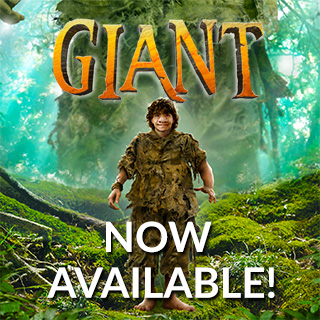A Child’s Feast by Kathleen Armstrong

I fondly remember visiting Kathleen Armstrong’s classroom — a space brimming with energy, creativity, and the spark of curiosity only young students can bring. These fifth graders had recently immersed themselves in the world of Heartlight, and their questions during our discussion left a lasting impression on me. They weren’t just reading the story; they were living it, interpreting its meaning with depth far beyond their years. Moments like these remind me why I write: to spark wonder, inspire conversations, and create a connection between storyteller and reader.
Kathleen captures the spirit of that classroom beautifully in her piece, “A Child’s Feast.” Reading it now brings back such vivid memories — not just of the visit itself, but of how powerfully teachers like Kathleen nurture a love of reading and imagination in their students. Her account affirms what I’ve always believed: stories have the power to inspire and heal, especially when shared in the right hands.
A Child's Feast by Kathleen Armstrong (1996)
At the Creve Coeur Library I sat in my favorite chair, the one at the back of the stacks near the magazines. I liked this quiet spot, a good place to read, write in my journal, or contemplate the challenges of my classroom. On this day I chose to glance through The Horn Book. As I perused the magazine, an advertisement caught my eye about a newly published book. The cover illustration pictured a large butterfly with an old man and a young girl riding on its back. The title Heartlight intrigued me, and the author’s photo and accompanying caption persuaded me to look for the book among the stacks. Not finding the book, I moved to the check-out desk.
“I’d like a request card, please.”
Heartlight lived up to its promise. That fall I added the story to my reading program. I spent long hours excitedly preparing ways to introduce the story. The class embraced the notion that the universe might harbor a substance capable of carrying someone off to the farthest reaches of space—a substance first glimpsed in the wings of a butterfly. But it was the language that truly captured the children’s imagination. Each day I awaited their findings, their incredible ideas, but most of all I loved their questions. Fifth graders, so impressionable, so willing to jump headlong into new projects, wanted solutions to serious problems.
***
He walked over to our rocking chair and sat down as if he belonged there. A hush came over the students who had waited so many months to meet Tom Barron. Ever since they had read Heartlight, they had been filled with questions about his characters and ideas. I introduced him to the class.
“I am so glad to meet all of you,” he declared. “You wrote wonderful letters about my book. You didn’t just read it, you thought about it. I can tell that you like to write, too.”
I remembered the day we had written those letters. The class was quite excited. One student wanted to know if there really was such a thing as a morpho butterfly. Had Mr. Barron ever seen one? Another wondered about the Nurse Crystal, wanting her to be real to feel the same way Kate had felt, to experience the Nurse Crystal’s life-giving love. Others thought about The Pattern, the cycle of life, some of them for the very first time. They empathized with Kate when Grandfather died. They didn’t want to accept it at first, thinking it unfair. Later, they began to understand it had to be that way.
LaToya wrote:
Dear Mr. Barron,
We just read Heartlight in reading class. I really liked it. But I am sad about Grandfather. He was a special man. It would be wonderful to have a Grandfather like him.
The Darkness is really awful. We talked about it. Some people think it is things like world hunger. I think it is Saddam Hussein. My father is in the Persian Gulf War right now. I miss him. I wish he could destroy The Darkness so I wouldn’t have to worry anymore. We need more “heartlight” to help him. I drew a picture of my dad killing The Darkness. I hope you like it.
Love,
LaToya
There he was, full of “heartlight,” the special stuff that makes us who we are, sitting in my classroom, talking to my students. What a remarkable man. Looking like the Pied Piper, he was surrounded by twenty eager faces, each waiting to hear the answer to a special question.
“Yes, there is a morpho butterfly. I brought one just for you to see,” he said, holding it up. “This specimen belonged to my mother. Did you know that their wings are so vibrant they can be seen from a weather satellite ten miles high? Pass the box around.”
He paused for a moment. “Writing is a little like making a stew. First, you slice in some meat and vegetables. Then you add some broth and let it cook down very slowly,” he said, stirring the air as if it were a stock pot. “After a while, add some herbs and let it simmer. Slowly, over time, it condenses, integrates. Stories are like that. The more you work on them, the richer they get.”
Students peppered him with questions. How long did it take to write Heartlight?
“Six years.”
Where do you get your best ideas?
“From life. Real life. That includes everything you have ever done, dreamed, seen, felt, heard, tasted, smelled, and read.”
Then someone asked if he was married. “Oh, yes,” said Tom, a smile spreading across his face and lighting up his eyes. “My wife, Currie, is a musician. We have three children—a daughter, Denali, and two sons, Brooks and Ben. Each of them is named for a special place, two in Alaska and one in Scotland.”
“What is your question?” he asked, looking at LaToya.
She asked, “What do you think The Darkness really is?”
“I remember your letter, LaToya. The Darkness is the things you mentioned and things that haven’t even appeared yet. Misery, ignorance, suffering, hatred. Like The Darkness, we can’t seem to get rid of those things for good. But as long as people are willing to try, there is hope. I hope your dad will be home soon.”
LaToya sat back on her heels. She closed her eyes and smiled. She was pleased that he remembered her letter and her dad.
Another voice spoke up. “Do you ever get ideas from your kids?”
“Better than ideas, I get inspiration. Let me tell you a little story about my three-year-old daughter. One night, in the middle of the night, she woke up with a scream. I ran to her room and found her sitting bolt upright in bed, pointing at the clock. It was precisely midnight. When I asked her what was wrong, she turned a frightened face to me and said, ‘The big hand ate the little hand!’
He grinned. “Then came the inspiration. As we sat together on her bed, watching the two hands of the clock separate, she turned to me again. She was no longer frightened. ‘It’s all right, Dad,’ she declared. ‘It’s just the start of another day.’ And ever since that moment, whenever I’ve felt like my life was at midnight, I’ve heard her little voice saying it’s just the start of another day.”
“Are you writing a new book?”
“Yes. It’s called The Ancient One.” He began to read from his manuscript:
As she crouched inside the hollow of the great redwood, she began to hear something else. It was a coursing sound, like the surging of several rivers. She realized with a start that it must be the sound of resins moving through the trunk and limbs of the tree. And, strangely, through her own self as well.
Then she heard something more. With all her concentration, she listened to a distant gurgling sound. It came from far below her, rising from the deepest roots of the tree. They were drinking, drawing sustenance from the soil.
Another sound joined with the rest, completing the pattern. Like an intricate fugue, it ran from the remotest tips of the needles all the way down the massive column of heartwood. Back and forth, in and out, always changing, always the same. This was the sound, she realized at last, of the tree itself breathing. The sound of life being exchanged for life, breath for breath.
“Great tree,” she said in wonder, “I feel so young. And you are so very, very old.”
A full resonant laughter filled the air, stirring even the sturdiest branches. ‘I am not so young as you, perhaps, but old I surely am not. The mountains, they are old. The oceans, they are old. The sun is older still, as are the stars.
And how old is the cloud, whose body is made from the vapors of an earlier cloud that once watered the soil, then flowed to the river, then rose again into the sky? I am part of the very first seed, planted in the light of the earliest dawn. And so are you. So perhaps we are neither older nor younger, but truly the same age.’
Our time with Tom had come to an end. He saved just enough time to sign each student’s book and share some of the same picnic food as Kate and Grandfather—lemon pound cake.
Tom’s visit inspired these fledgling writers. They would most certainly have abandoned all other studies just to keep writing. They wrote stories and poetry in abundance. They began illustrating them regularly, and the reticent writers began sharing their stories and drawings, preparing frequently for classroom publication.
In late spring, six months after his visit, LaToya wrote:
Mr. Barron, Mr. Barron
I liked your visit very much.
You told me things I didn’t know.
My heart you did touch.
Mr. Barron, Mr. Barron
Think and write is what I do.
I like to smile more.
I can help someone too.
Kathleen Armstrong’s classroom is a testament to the magic that happens when stories come alive for young readers. I am honored that Heartlight became part of their journey, and grateful for the opportunity to see firsthand how much stories can mean to children. Moments like these, when a story sparks curiosity and connection, are what make the long hours of writing worthwhile. As Kathleen’s students showed me, the imagination of young minds is boundless — and their questions and ideas continue to inspire me even today.
Looking ahead, my hope is that stories like Heartlight will continue to find their way into classrooms and hearts, helping young people discover the magic within themselves and the world around them.

